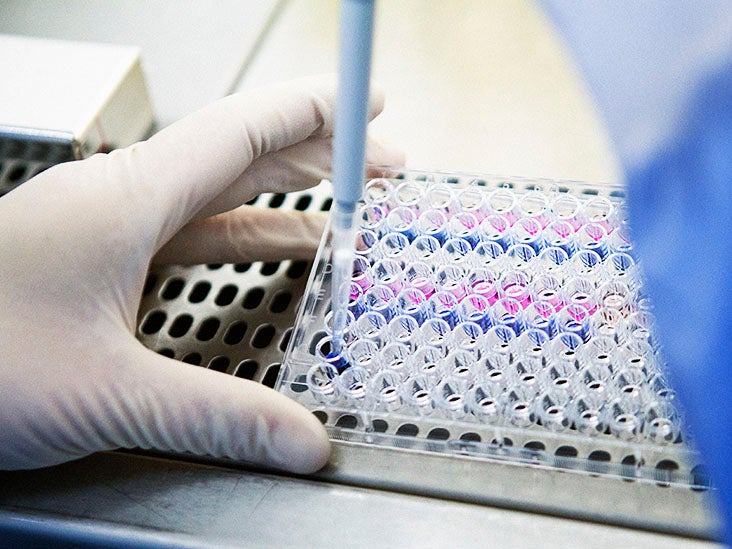AIDS defining illnesses: Pneumonia, meningitis, and more - Medical News Today

AIDS defining illnesses are diseases that occur in people living with HIV. They are one of the indications that HIV has progressed to AIDS, the most severe form of the disease.
AIDS defining illnesses can differ in severity, and some occur more frequently than others. According to the
However, some may still develop an AIDS defining illness if:
- they do not know they have HIV
- they do not take ART
- ART is unable to kill the virus
Doctors can also make a diagnosis of AIDS when CD4 levels fall below 200 cells per milliliter (ml), if they develop certain opportunistic infections, or both. Common AIDS defining illnesses include:
Pneumocystis jiroveci pneumonia (PJP)
A fungus known as Pneumocystis jirovecii causes this type of pneumonia. It is a major cause of infection in people with HIV, with nearly 400,000 cases worldwide each year.
Symptoms include:
- cough
- shortness of breath on exertion
- fever
- tachycardia
Doctors may prescribe a combination of intravenous (IV) antibiotics for severe infections. People with an increased risk of PJP may need antibiotics to prevent a fatal infection before it can develop.
Candidiasis
A group of fungi known as Candida can cause candidiasis infections. One of the most common fungi is Candida albicans. While candidiasis can affect many parts of the body, doctors associate oral infections with immunocompromised individuals.
People with this infection may experience difficulty or pain when swallowing food. Doctors will recommend antifungal therapy to treat it.
Coccidioidomycosis
Coccidioides fungus can cause coccidioidomycosis, or as it is sometimes known, "valley fever." Infection can occur if someone inhales the fungal spores.
People with this infection may feel generally unwell or have no symptoms. Antifungal drugs, such as azoles and amphotericin B, can treat this infection.
Cryptococcal meningitis
This form of meningitis results from a fungal infection that causes inflammation in the brain and spinal cord.
HIV-associated cryptococcal meningitis accounts for approximately 150,000–200,000 deaths annually. People with the disease may experience:
- fever
- headache
- confusion
- nausea
- behavioral changes
Doctors may prescribe antifungal therapy starting with a combination of liposomal amphotericin B and flucytosine. The long-term use of fluconazole is important for rebuilding the body's immune system. People generally respond to treatment, and symptoms lessen.
Histoplasmosis
This disease is due to the fungus Histoplasma capsulatum. It can enter the lungs and cause infection long after initial contact with the fungus.
The symptoms may be flu-like, including fever, weight loss, and fatigue. Histoplasmosis becomes AIDS defining when the fungus spreads outside the lungs and affects other parts of the body. This may cause liver or spleen enlargement, pulmonary symptoms, and adrenal gland issues.
Treatment may involve intravenous liposomal amphotericin and then administering the antifungal drug itraconazole for severe cases.
Cryptosporidiosis
Cryptosporidium, a type of parasite, causes cryptosporidiosis. It causes severe diarrhea and abdominal pain. Doctors treat it with antiparasitic drugs, such as nitazoxanide and azithromycin.
Toxoplasmosis
Toxoplasmosis is a Toxoplasma gondii infection. This parasite lives in animal feces and contaminated foods.
When CD4 count drops dramatically,
Cytomegalovirus (CMV)
CMV infections can affect many parts of the body. When it affects the eye, it causes CMV retinitis. Without treatment, the disease may advance quickly.
CMV can cause increased floaters in the eye, or a loss of peripheral vision. However, not all individuals experience symptoms. There is a range of oral and intravenous antiviral drugs options that can be effective against CMV infections.
Mycobacterium avium complex (MAC)
Mycobacteria cause MAC. In a person with AIDS, the infection can spread throughout the body. Symptoms may include fever, night sweats, abdominal pain that last several weeks. MAC typically affects people with CD4 counts
How a doctor prevents and treats MAC depends on an individual's situation. If a person is not already undergoing ART, a doctor may initiate this immediately. If that is not possible, they may receive medications to prevent widespread MAC.
If someone has an infection, doctors may use a combination of antimycobacterial drugs, such as azithromycin or clarithromycin.
Tuberculosis (TB)
TB occurs due to the Mycobacterium tuberculosis bacteria. The World Health Organization (WHO) estimates TB to be the cause of death in
Recommendations for treating TB in people with HIV are the same as treating adults without the virus. A doctor may prescribe the following antituberculosis drugs in specific regimens:
- isoniazid
- rifampin
- ethambutol
- pyrazinamide
Salmonella septicemia
People can get Salmonella from contaminated food or water sources. In individuals with HIV, the bacteria can enter the blood and move to other parts of the body, causing serious illness.
People tend to get gastroenteritis symptoms with this disease. Doctors may prescribe an antibiotic known as fluoroquinolone to treat it.
Pneumonia
Individuals with HIV can experience persistent pneumonia infections. Various bacteria, viruses, and fungi can cause it. Therefore, it is advisable to get annual vaccines for influenza, PCV13, and PCV23 to help prevent this.
HIV-related leukoencephalopathy
Human polyomavirus 2, or JC virus, causes this disease in people with HIV. Symptoms can vary but may include:
- clumsiness
- progressive weakness
- visual and speech changes
There are limited treatment options for this disease. The main approach to therapy is reversing the damaged immune system's response to the HIV infection.
HIV wasting syndrome
Wasting refers to unintentional loss of more than


Comments
Post a Comment